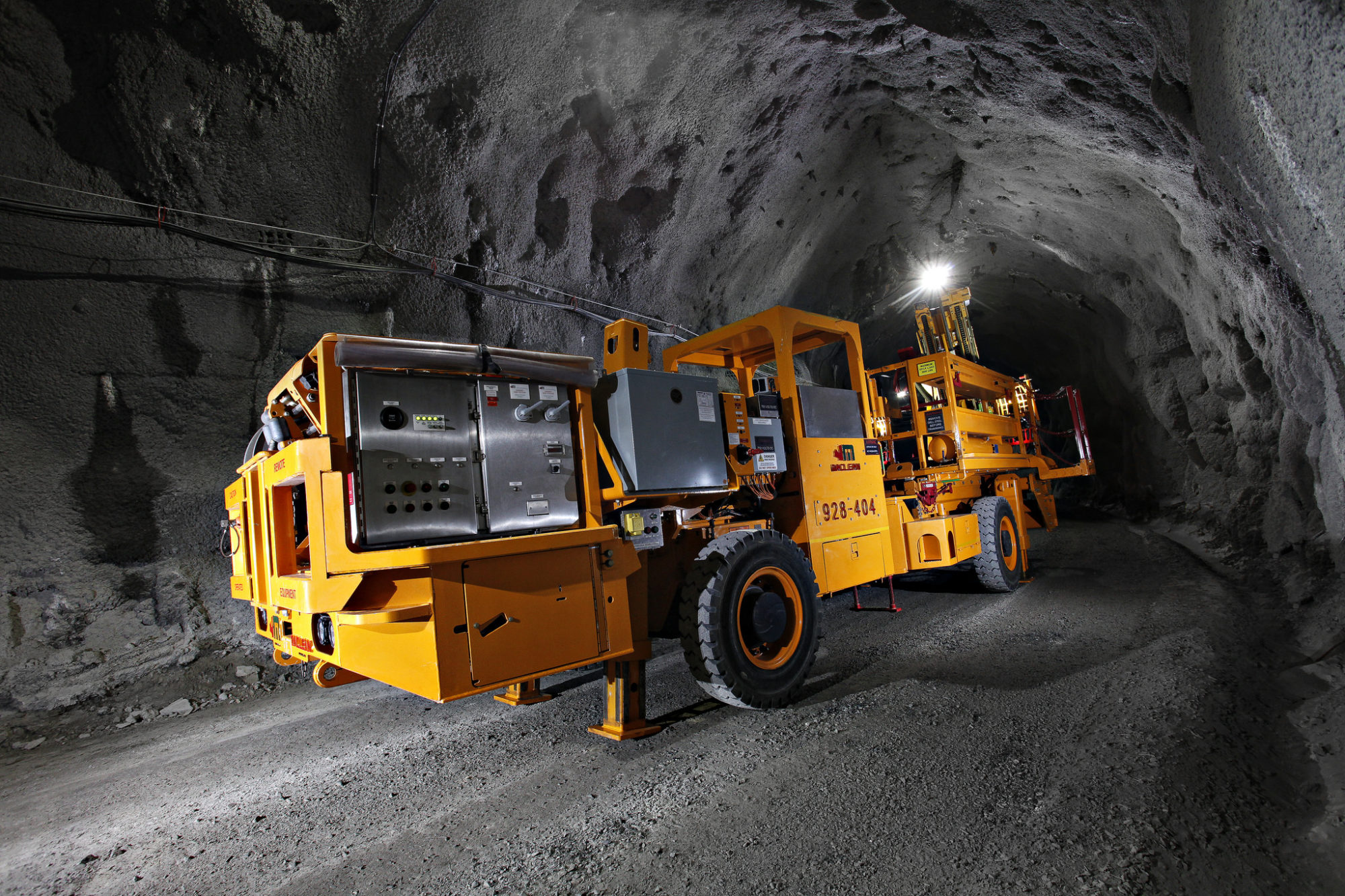In a recent blog post, Goldcorp explained how ‘going electric’ at its Borden gold development project in Ontario, Canada, is having a positive impact on ventilation requirements and mine air heating.
The company previously laid out plans to use all-electric equipment at the project with a fleet that includes Sandvik DD422IE automated battery/electric jumbos and MacLean Engineering 975 Omnia Bolter battery bolters, as well as Sandvik LH514E electric LHDs.
Goldcorp, which recently said all mine infrastructure to support production at Borden was in place, is now seeing the benefits of this equipment on the planned ventilation network.
“Worker health and safety is of the utmost importance at Goldcorp and air quality is a high priority in underground operations,” the company said in the first of three blog posts on Borden’s ‘going electric’ strategy.
“Ventilation fans, air ducts, and infrastructure such as fresh air intake raises, are necessary to distribute fresh air, and as a result are indispensable to ensure the health, safety and comfort of anyone working underground. However, as mine development progresses deeper, costs rise as it takes more effort to deliver quality air.”
To conserve energy and save money without compromising safety and air quality, Borden has implemented a ventilation on demand (VoD) system. The amount of energy supplied to the fans is governed by the air flow, which in turn is determined by workplace conditions and the amount of equipment and people in an area. VoD allows a mine to automatically adjust underground ventilation by controlling the fans remotely through a computer interface on surface.
This system rides on the quality of the IT infrastructure, Goldcorp says.
At Borden, this is accomplished by using coaxial cables and backing them by fibreoptic cabling back to surface. “The coaxial cables are great for underground environments,” the company said, explaining they are cheap and easy to maintain – a big advantage in areas that are impacted by blasting and see a lot of mobile equipment moving back and forth.
The VoD system then automatically determines the ventilation requirements in that area and will supply fresh air accordingly.
The system makes those decisions by collecting and analysing data from underground sensors for air quality, temperature and equipment and personnel locations. This significantly reduces the amount of energy consumed by the fans. In addition, maintenance costs will decrease as they are not running constantly when not needed.
But, Goldcorp stresses the big synergy between battery electric equipment and VoD is the need for a solid communications backbone.
“As with any source of energy, there are associated risks, which in the case of batteries is the integrity of the battery itself,” the company said.
To manage the risks around batteries, the battery temperatures and voltages are monitored continuously at Borden to look for anomalies that indicate issues.
This communication network is, in turn, also beneficial to enable proximity detection, VoD, tagging and tracking, and in more general terms, “turning Borden into a modern data-rich mine”, the company said.
The absence of diesel equipment has not only significantly reduced ventilation requirements and costs, it has even impacted the design of the mine itself, according to Maarten van Koppen, Senior Project Engineer at Goldcorp.
“Drifts are now designed to be smaller since the ventilation ducting is smaller, and the number of auxiliary fans was cut by half or more. In addition, we avoided the need to develop a return air raise in the mine, which probably would have been very visible from the lake in winter due to the condensation plume,” he said.
“Keeping the Borden operations invisible to our neighbours on the lake is one of the key design criteria for the project, and we saved a fair bit of money along the way.”











